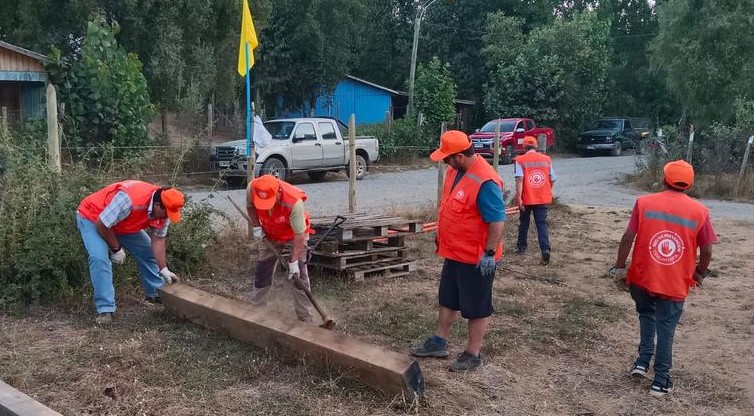Phytosanitary surveillance conducted to timely detect forest pest
- Phytosanitary problems caused by living agents represent a significant threat to the sustainability of the resource.
In order to timely detect the presence of the pine bark weevil,Pissodes castaneus, and adopt the defined phytosanitary measures to prevent its establishment in the Biobío region, the Regional Director of the Agricultural and Livestock Service (SAG), Roberto Ferrada, along with forestry professionals, supervised the harvest of bait plots for this significant forest pest.
"This is very important work that lies at the core of SAG: phytosanitary and zoosanitary protection, which originates from SAG but is a collaborative effort through a Technical Committee with associations linked to forest production: Corma and PYMEMAD. Essentially, what we do in December or January is install radiata pine logs as bait logs—composed of three roundwoods—to concentrate oviposition, aspects related to the biological cycle of Pissodes in this case, and in March–April, we inspect the logs to verify which insects were concentrated there and later take samples to send to the lab if there are any doubts. We have also supervised the activity with forestry companies. To date, we have not detected the pest in the region," emphasized the director.
He added that these logs, during the insect's flight season, attract female oviposition, allowing for timely pest detection. In this regard, he stated, "It is very important to act collaboratively and in a coordinated manner, as this is a pest already present in the country, with internal regulations. The Biobío region is free of this insect, but it is a pest capable of causing tree death and is also a limitation for forest product exports in some markets."
Meanwhile, the Phytosanitary Protection Submanager of Forestal Mininco, CMPC, Miguel Castillo, noted that "phytosanitary problems caused by living agents represent a significant threat to the sustainability of the resource because they cause direct losses to crops and restrictions on wood movement due to quarantine reasons. This is a relevant pest, and for its management, a country-led strategy was designed by SAG, which we adhere to."
The SAG director called on forest producers to facilitate the work of SAG officials by allowing access to their properties, as these logs are placed in groves, medium-sized, and large forests, which are inspected months later. He also urged them to promptly report the detection of this or any other pest to ensure timely field response.
During harvest, inspectors must carefully observe the bark of each log before debarking, as adult pine bark weevils can blend in with the bark color. Then, each roundwood must be debarked, checking the wood for galleries, larvae, pupae, or adults. In the region, 350 bait plots were installed, representing 19% of those set up nationwide by SAG.
Pissodes castaneusis a pest native to Europe and North Africa, where it is widely dispersed, having been introduced in Argentina, Brazil, Uruguay, and Chile. It is a quarantine pest present in our country, under official control through SAG's Exempt Resolution No. 5088/2014 and its amendments. It has been detected in the country between the Aysén and Araucanía regions, leading to regulated wood movement.
This pest primarily affects species of the genusPinus, with radiata pine being one of the most susceptible; it has also been reported in other countries on firs (Abies spp. and Picea abies), European larch (Larix), and yew (Taxus baccata).

















